(111669 products available)
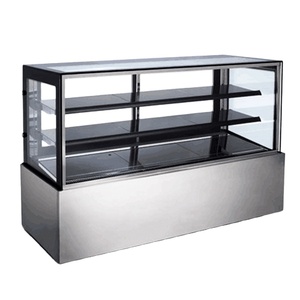


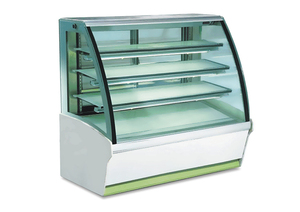
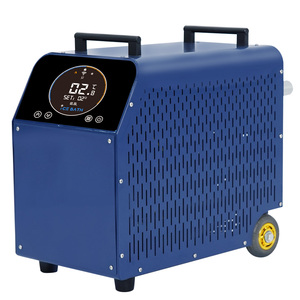













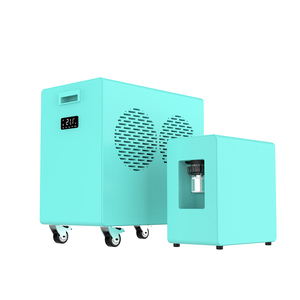


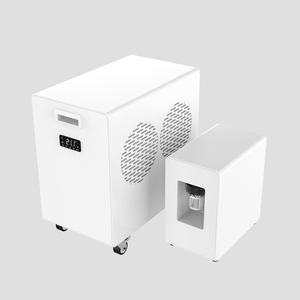
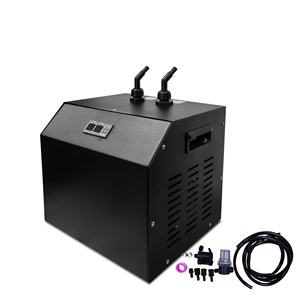
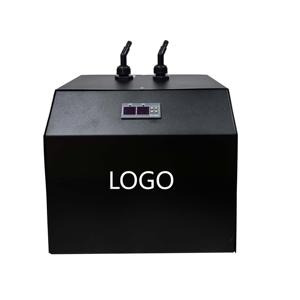


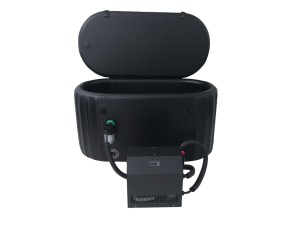


















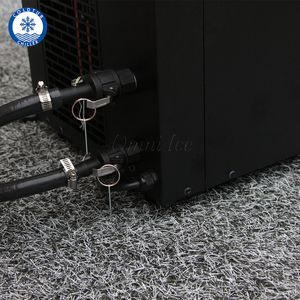
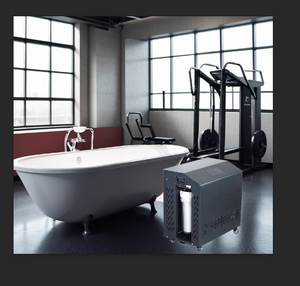






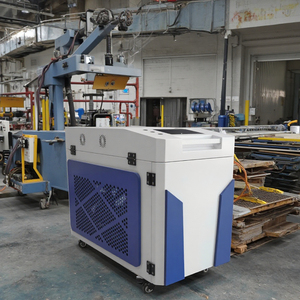
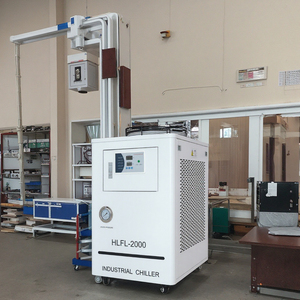

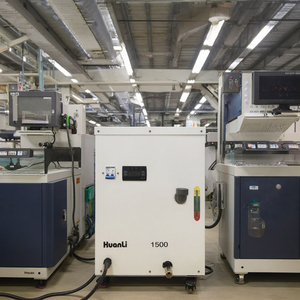


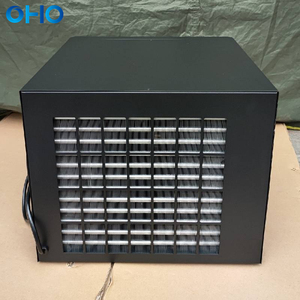


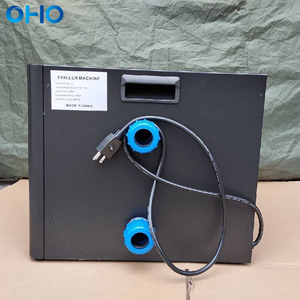







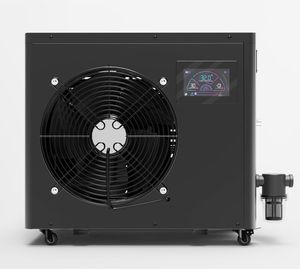


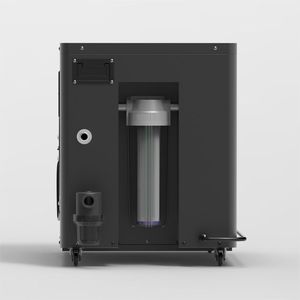

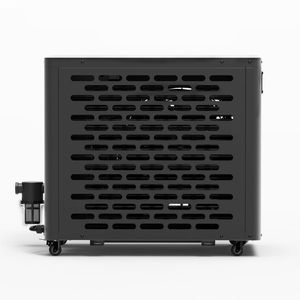













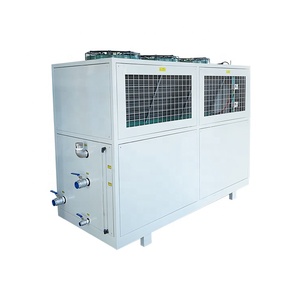






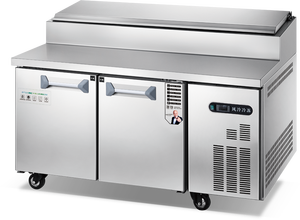




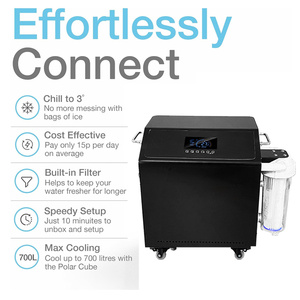







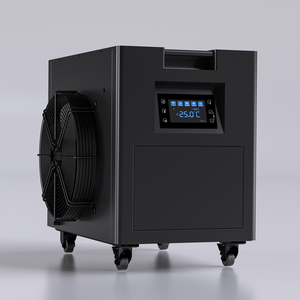
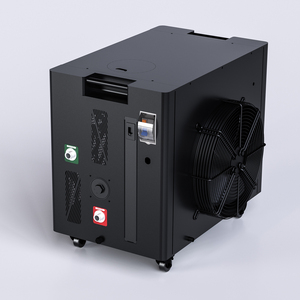





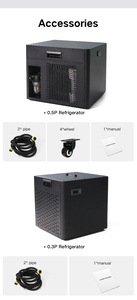
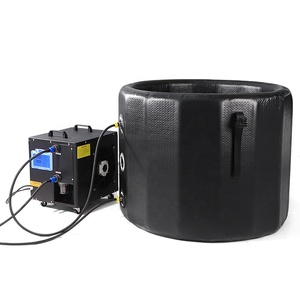






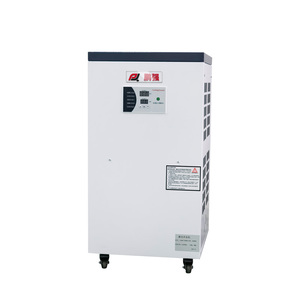
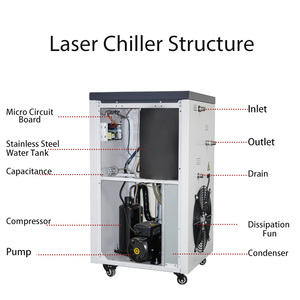

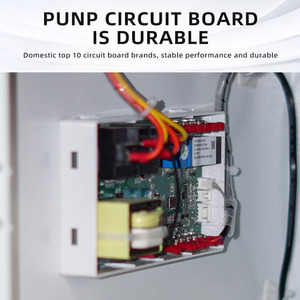


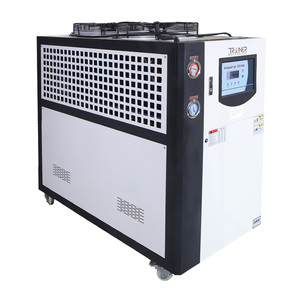




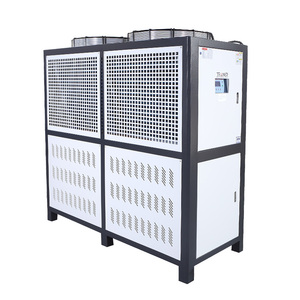
























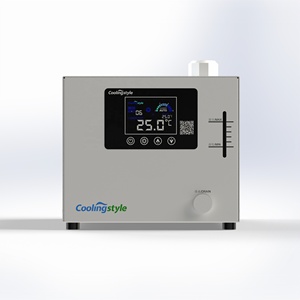
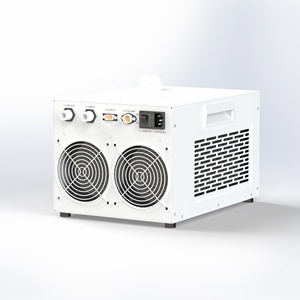
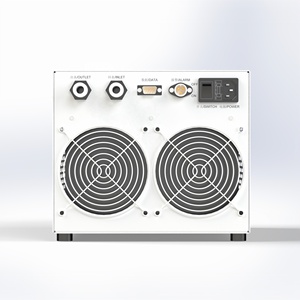























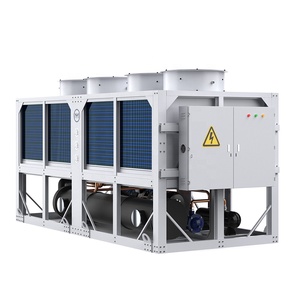





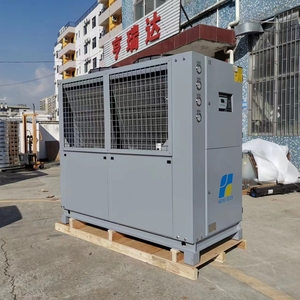


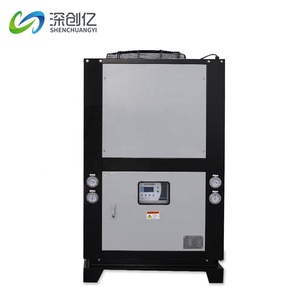

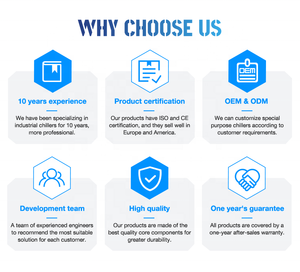






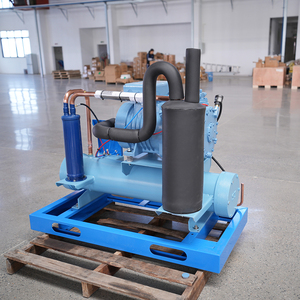









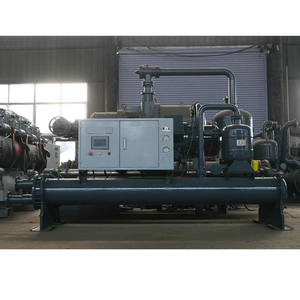


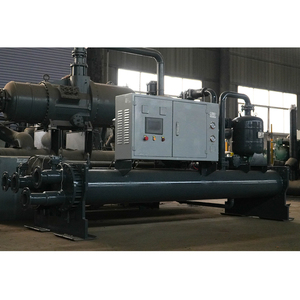











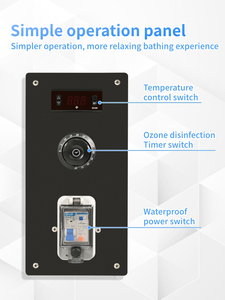


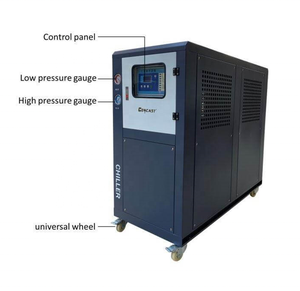

A chiller is an industrial refrigeration machine that removes heat from a liquid through a vapor-compression or absorption cycle. New chillers are essential components for cooling large buildings, typically used as part of a centralized air conditioning system.
Centrifugal chillers
Centrifugal chillers, which are commonly used in commercial buildings, utilize a centrifugal compressor to remove heat from a liquid through the vapor compression cycle, making them suitable for high-capacity cooling applications. Meanwhile, centrifugal chillers powered by electric driving are the most popular types of chillers on the market, mainly including water-cooled centrifugal chillers and air-cooled centrifugal chillers.
Screw chillers
Screw chillers use a twin-screw compressor to remove heat from a liquid. They are ideal for medium to large cooling capacity in commercial and industrial areas. Similar to centrifugal chillers, water-cooled and air-cooled screw chillers are also available, which are basically the same as the water-cooled and air-cooled refrigeration methods of centrifugal chillers.
Absorption chillers
Absorption coolers are complex machines that use a heat source and lithium bromide solution to refrigerate. They are mainly applicable to large-scale cooling needs and use situations with a steady heat source available, such as industrial plants, commercial buildings, etc. Water-cooled absorption chillers are the mainstream products on the market now, combining both advantages of cooling and water heating.
Modular chillers
Modular chillers are a type of chiller that integrates a refrigerating unit and cooling system into a compact modular design, which allows easy installation and adjustment of capacity according to specific demands.
Geothermal chillers
Geothermal chillers utilize the natural energy of the Earth to provide cooling. They are widely used in areas with a great depth of geothermal resources or regions of high geothermal energy.
Choosing the right chiller machine begins with understanding its specifications and what they mean. Here are the important specifications to look for when researching new chillers.
Capacity
The cooling capacity of a chiller is the amount of heat it can remove from a process or space in a given time. This quantity is expressed in kilowatts (kW) or refrigeration tons. One refrigeration ton equals 3.517 kW of cooling capacity. Chillers with a capacity that matches the amount of heat a client wants to remove will operate efficiently and maintain desired temperature levels.
Operating temperature range
New chillers have an evaporator or cooling component that generates a specific temperature range. The recommended temperature range will enable the chiller to maintain the desired temperatures without putting too much strain on its parts.
Energy efficiency
A chiller's energy efficiency will impact the total cost of owning and operating the machine. This figure may be in the form of an energy efficiency ratio (EER) or coefficient of performance (COP). It is advisable to consider choosing a chiller with a high EER or COP for improved energy use and lower operating costs.
Refrigerant
Each chiller type will use a specific refrigerant to absorb heat. Common refrigerants include hydrofluorocarbons (HFCs) like R-134A and R-410A, among others. This is an important specification to consider because some refrigerants are more environmentally friendly than others.
Noise level
A chiller manufacturer will list the machine's noise level in decibels (dB). This figure is more relevant to air-cooled chillers because they use fans and blowers. Water-cooled chillers are generally quieter than their air-cooled counterparts.
Dimensions and weight
Chillers are large cooling machines. Their dimensions and weight are important specifications to consider because of the space required for installation. Business owners may also need to factor in transport cost a refrigerating plant.
Controls
The chiller controller is probably the most important specification to consider when selecting a refrigerating machine. A chiller controller allows the operator to monitor the machine's performance, adjust cooling capacity, regulate temperature, and manage other essential functions. Business owners want a chiller with a user-friendly digital display and advanced control features.
According to a study, appropriate maintenance can extend a chiller's lifespan by another 5 to 15 years. Regular machine maintenance will also make it more efficient and decrease operating costs. Here are some practical maintenance tips to keep a new chiller functional and reliable.
Regular inspections
Periodic inspection is the most important preventive maintenance practice. Users should check external and internal refrigerating equipment components at regular intervals. A check of the entire chiller system can help user detect minor issues before they develop into serious problems.
Clean components
Manufacturers recommend regularly cleaning critical chiller components. This includes the condenser, evaporator, and cooling coils. Removing dirt and debris from these parts will ensure efficient heat exchange and proper airflow.
Lubricate moving parts
Regular lubrication of moving chiller components reduces wear and tear and lowers operating noise. This maintenance tip prolongs the life of the machine and lowers the risk of unexpected breakdowns. Some parts to consider are fan motors, pumps, and compressor shafts.
Calibration and adjustments
A chiller needs periodic adjustments and recalibration of its controls for optimal performance. The technicians can make the required adjustments based on the load and environmental conditions of the site. With this, the refrigerating machine will operate more efficiently with lower energy consumption.
New industrial chillers play a crucial role due to their ability to maintain temperature control in various applications. Here are some popular applications of new chillers in different industries.
Food and Beverage Industry
New chillers are essential in the food and beverage industry to preserve products like meat, dairy, fruits, vegetables, and processed foods. They maintain a constant low temperature in refrigeration systems to keep food fresh. Additionally, new chillers are used in the beer, wine, and soft drink industries during fermentation, mixing, and bottling to ensure product quality.
Pharmaceutical Industry
In the pharmaceutical industry, refrigerators and pharmaceutical cooling chillers are used to maintain the efficacy of drugs and vaccines. They ensure there is an optimal temperature during drug formulation, testing, and storage. Plus, they help in controlling temperatures during chemical reactions, fermentation processes, and laboratory experiments.
Plastic, Chemical, and Material Processing
Industrial chillers are a must in material processing industries, such as plastics, chemicals, and metallurgy. They are used to cool down molds, extruders, and injection-molding machines to maintain a constant temperature. This helps in achieving a high-quality end product. They are also used to regulate temperatures during chemical reactions to improve reaction rates and ensure equipment safety.
Hospitality and Entertainment Industries
In the hospitality and entertainment industries, new chillers enhance guest comfort in hotels, restaurants, and theme parks. They are used to provide cool air in rooms, public spaces, and conference facilities. Also, they support the cooling needs of aquariums, indoor water parks, and theme park rides to enhance visitors' experiences.
Data Centers and Server Farms
New chillers are specifically designed to maintain optimal temperatures for sensitive electronic equipment, servers, and computer systems. They help in preventing hardware malfunction and ensuring uninterrupted operations.
Laser and Optical Equipment
High-precision lasers and optical instruments require specific temperature control to maintain their performance and stability. New laser chillers provide this regulation by cooling optical components, laser sources, and electronic circuitry.
Medical Equipment and Imaging Systems
Medical devices like MRI machines, CT scanners, and ultrasounds use new chillers for temperature regulation. The coolers help maintain image clarity and resolution by ensuring stable operating conditions for electronic components and imaging sensors.
Robotics and Automated Systems
Robotic systems in manufacturing, healthcare, and research use new chillers to maintain optimal functioning. The robots help cool motors, actuators, and electronic controls to prevent overheating and ensure reliable performance.
Capacity and load requirement:
It is important to accurately estimate the required cooling capacity and refrigerant tonnage. Conduct rational calculations based on factors such as the amount of heat generated inside the building, the area of external wall exchange and insulation, the number of users, the local climate, and the architecture.
Energy efficiency:
Typically, the higher the energy efficiency ratio (EER) or the coefficient of performance (COP), the better the performance of the new chiller. Selecting a chiller with high energy efficiency can reduce operating costs.
Operating cost:
Consider factors such as energy consumption, maintenance fee, and repair expenditure, which may incur long-term operating costs, and choose chillers with high-efficiency refrigerants and convenient maintenance features.
Environmental compliance:
Check if the new chiller complies with applicable environmental regulations and standards, and choose a chiller with environmentally friendly refrigerants and energy-saving technologies.
Noise:
Audible noise requires special attention at night or in quiet places. Check the noise level of the equipment and choose a chiller that meets specific site requirements.
Brand and service:
Choose reputable brands and manufacturers, and understand their after-sales service systems, including maintenance network, technical support, etc., to ensure timely and effective maintenance and support during use.
Q: What is the latest technology in chillers?
A: Magnetic chillers are one of the recent developments in chiller technologies. They use magnetocaloric effects to cool spaces. Moreover, there has been a trend toward free cooling chillers. They take advantage of cool outdoor air or water to reduce cooling loads in in cool months. Also, smart or connected chillers has emerged recently. These are chillers integrated with IoT technologies. They allow remote monitoring, diagnostics, and control.
Q: What is the difference between an air-cooled and water-cooled chiller?
A: Air-cooled chillers rely on ambient air and heat exchangers to dissipate heat. Water-cooled chillers use water for heat transfer. Air-cooled chillers are typically more straightforward to install. On the other hand, water-cooled chillers may offer better efficiency in large-scale applications. Water-cooled chillers also have more compact designs compared to air-cooled chillers.
Q: What is the life expectancy of a chiller?
A: With good maintenance routine, chillers can last between 10 to 15 years or even up to 20 years.
Q: What are the signs that a chiller is failing?
A: A sudden increase in temperature is a sign of a failing chiller. Second, any unusual noise such as banging, clicking, and hissing should raise concerns about the chiller's condition. Also, a chiller that keeps shutting down or tripping is failing. Moreover, the alarming rise of power consumption may indicate a malfunctioning chiller. Lastly, any refrigerant leaks should be addressed promptly.
Q: What is the effect of humidity on chillers?
A: High humidity levels may pose a burden to cooling systems and chillers. This is because high humidity causes heat retention in buildings. As a result, the chiller has to work harder to cool the space. Consequently, this may lead to increased energy consumption and reduced life span of the chiller.